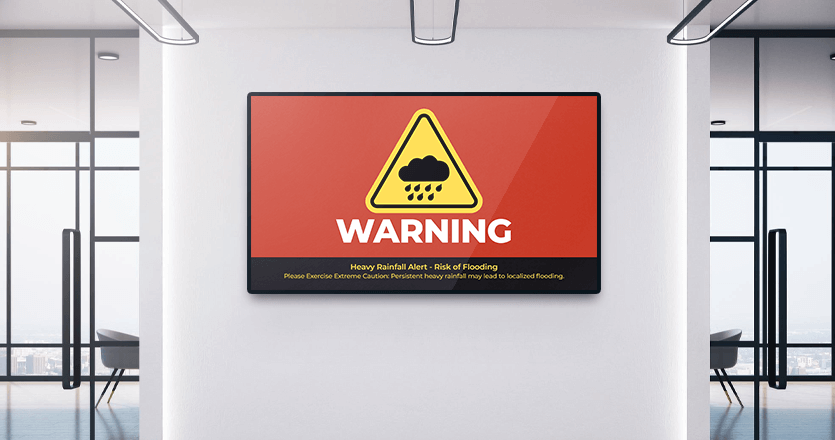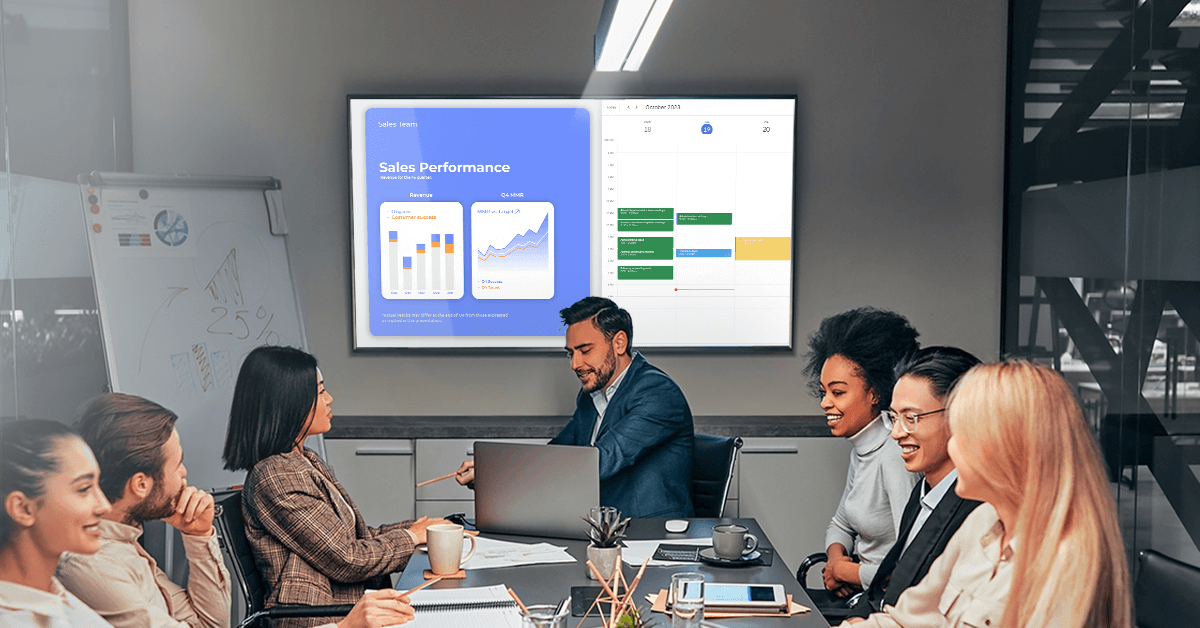Whether you’re managing a digital display in a retail store, corporate office, or public space, well-thought-out content scheduling strategies can make all the difference.
In this guide, we’ll explore key strategies for effective content scheduling with Yodeck, which is crucial to captivate audiences and maximize the impact of your message.
1. Understanding Your Audience
Before content scheduling, you must deeply understand your target audience and the environment where your digital signage is placed. Consider the demographics, interests, and behaviors of the people exposed to your content. Additionally, consider the physical location, time of day, and any external factors influencing audience engagement.
For instance, if your digital signage is in a busy shopping mall, you should schedule promotional content during peak shopping hours. In a corporate setting, you may tailor content to coincide with employee breaks or important meetings.
2. Creating a Content Calendar
Once you’ve gathered insights into your audience and environment, creating a comprehensive content calendar is next. This calendar should outline the schedule for each piece of content, specifying the display date, time, and duration. A well-organized content calendar helps you plan campaigns, promotions, and other events in advance, ensuring a seamless and timely flow of information.
Consider using the Yodeck platform, which incorporates a mix of content types, such as promotional videos, product showcases, announcements, and entertainment. This variety keeps your audience engaged and prevents monotony. Additionally, align your content with relevant holidays, seasons, or local events to create a sense of timeliness and relevance.
3. Dynamic Scheduling
Yodeck platform provides the flexibility to schedule content dynamically based on specific times and days. Take advantage of this feature to tailor your messages to different periods. For instance, if you operate a restaurant, you might display breakfast specials in the morning, switch to lunch promotions in the afternoon, and feature dinner offerings in the evening.
Moreover, consider adjusting the frequency and duration of content based on the day of the week. Weekends may require a different content approach than weekdays, and special events or promotions can be highlighted on specific days to maximize impact.
4. Boost Engagement with Real-Time Data
To enhance the relevance of your content, consider integrating data feeds and real-time information into your digital signage strategy. This could include live social media feeds, weather updates, news headlines, or any other information that adds value to your audience. For example, a retail store might display real-time sales metrics, while a transportation hub could showcase current arrival and departure times.
By leveraging dynamic content that responds to real-world events, you demonstrate the agility of your digital signage strategy and keep your audience informed and engaged.
5. Implementing Content Triggers
Content triggers allow you to automate the display of specific content based on predefined conditions. For example, you might set up triggers to display a promotional video when foot traffic reaches a certain threshold or to switch to emergency information during a crisis. Content triggers add an element of responsiveness to your digital signage, ensuring your messages are timely and contextually appropriate.

6. Diversify Content Mix
Different types of content resonate with audiences in diverse ways. Incorporate a mix of content formats such as blog posts, infographics, videos, and podcasts into your schedule. This diversity caters to varied audience preferences. Experiment with different formats and analyze their performance to refine your scheduling strategy over time.
7. Monitoring and Analytics
An effective content scheduling strategy doesn’t end with implementation; it requires continuous monitoring and optimization. Use analytics tools provided by your digital signage platform to track the performance of different pieces of content. Analyze viewer engagement, conversion rates, and other relevant metrics to refine your content scheduling strategy over time.
Regularly review your content calendar and adjust based on the analytics insights. This iterative process ensures that your digital signage remains dynamic and continues to meet your audience’s evolving needs and preferences.
In a Nutshell
In digital signage, effective content scheduling is an art that blends creativity with strategy. Understanding your audience is the first step. Then, let Yodeck take the lead and develop a robust content scheduling strategy that maximizes the impact of your digital signage. Stay agile, stay relevant, and watch as your digital displays become powerful tools for communication and engagement.
